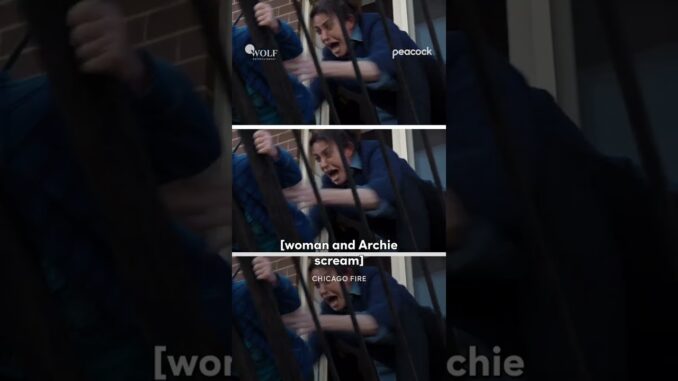
{“data”:”
The Glimmering Rail and the Impending Doom: A Study in Chicago Fire's Heart-Stopping Moments
\n
"Chicago Fire" is a masterclass in crafting tension, a show that understands the visceral thrill of watching everyday heroes face impossible odds. While the fires rage and the rescues soar, it's often the unexpected, the seemingly innocuous situation that spins into a vortex of dread, leaving viewers breathless. The scene where a young boy gets his head stuck in a collapsing railing is a prime example of this expertly deployed suspense, a microcosm of the show's ability to shock and grip its audience.
\n
The brilliance of this moment lies in its initial mundanity. We've seen the team tackle blazing infernos, extract victims from mangled cars, and navigate perilous structural collapses. Compared to those spectacles, a child stuck in a railing feels almost…pedestrian. This is exactly what makes it so terrifying. It's relatable. Every parent can imagine the fleeting moment of inattention, the child's innocent exploration turning into a nightmare. This relatability immediately forges a powerful connection with the scene, amplifying the impending danger.
\n
The framing of the scene is crucial. The railing itself, initially a simple, wrought-iron structure, becomes a character. We see the rust eating away at its foundation, the slight wobble that hints at its instability. The camera lingers on the boy's face, the innocent curiosity gradually replaced by growing panic as he struggles to free himself. He's not just a nameless victim; he's a son, a brother, a child with a life ahead of him. This personal investment heightens the stakes considerably.
\n
Then comes the realization, the silent scream of the collapsing structure. The crack widens, the railing groans, and the ground beneath it begins to give way. Suddenly, the simple predicament of a trapped child transforms into a race against time and gravity. This is where "Chicago Fire" truly excels. The show doesn't just rely on explosions and pyrotechnics; it understands the power of slow-burning dread. The collapsing railing isn't a sudden event; it's a gradual, agonizing process, each creak and shift a nail in the coffin of hope.
\n
The reactions of the firefighters are equally compelling. We see the urgency etched on their faces, the calculated movements honed through years of training. They know the railing is about to give way, and they know the boy is helpless. Their determination, their unwavering focus, becomes a beacon of hope in the face of imminent disaster. This is where the core of "Chicago Fire" shines through: the unwavering commitment to save lives, even in the most desperate circumstances.
\n
The tension culminates in a desperate scramble. Every second feels like an eternity as the firefighters strategize, manipulate the unstable structure, and try to free the boy. The camera cuts between the boy's terrified face, the firefighters' grim determination, and the increasingly precarious railing. It's a masterclass in visual storytelling, creating a palpable sense of anxiety and forcing the viewer to hold their breath until the very end.
\n
The resolution, whether successful or not, is almost secondary to the emotional impact of the scene. Regardless of the outcome, the moment lingers long after the credits roll. It's a stark reminder of the fragility of life, the unexpected dangers lurking in plain sight, and the unwavering dedication of those who risk their lives to protect others.
\n
The scene with the boy trapped in the collapsing railing is more than just a shocking moment; it's a carefully constructed narrative that leverages relatable fears, builds suspense through visual cues, and showcases the unwavering heroism that defines "Chicago Fire." It's a reminder that true drama doesn't always require explosions and spectacular stunts; sometimes, the most powerful moments are the quiet, desperate struggles against the forces of fate, played out against the backdrop of a seemingly ordinary day. It's a testament to the show's ability to shock, grip, and ultimately, resonate with its audience on a profound emotional level.
\n”}
